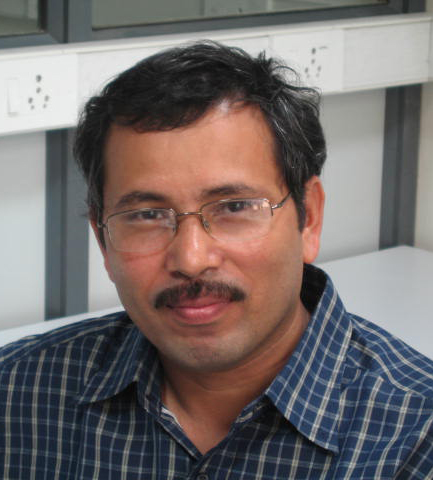Proteostasis and Disease Regulation
Protein metabolism is essential for normal cellular function and it involves synthesis, folding, transport and degradation of proteins in a cell on a constant basis. Chaperones post-translationally promote newly synthesized proteins into a correctly folded functional protein. Protein translocation machinery, proteasome and autophagy processes are the critical events for protein subcellular localization and degradation. Stress as well as aging confronts chaperone function and protein clearance network that lead to protein misfolding, protein overload and cellular dysfunction. In human protein misfolding, aggregation and impaired protein clearance mechanism are the features of many neurodegenerative diseases, cancer and metabolic diseases.
The aim of our research is to delineate the mechanism of protein misfolding, aggregation and protein quality control system in cancer and neurodegenerative diseases. We use multi-disciplinary approaches combining biochemistry, biophysics, animal model, advanced microscopy and mass spectrometry-based proteomics to address our research questions.
Current research project:
- Post-translational modification of proteins
Protein post-translational modification (PTM), one of the important mechanisms, contributes enormous functional diversity in the proteome and governs many cellular processes. Primary, secondary and tertiary structures of a protein dictate its structural fold. However, a function of a protein is often determined by PTMs that provide the specificity, stability and localization. More than 250 PTMs have been identified but only a few of them are being studied. The progress of mass spectrometry-based proteomics enables us to identify and quantify PTMs and unravel the mechanism of how multiple PTM signals are integrated at cellular and organism level. Our group aims to investigate the qualitative and quantitative change of PTMs like ubiquitination, phosphorylation, redox-modification, acetylation and glycosylation in disease condition particularly cancer and neurodegenerative diseases.
- Deubiquitinating enzymes and disease regulation
One of the important aspects of our research is to understand the ubiquitin signaling mechanisms and their regulation in different diseases. Human genome analysis and proteomics data reveal almost one hundred deubiquitinating enzymes (DUBs), which majorly regulate ubiquitin homeostasis in cells. However, molecular functions of most of the DUBs are still elusive. We are investigating the molecular basis of their involvement in cellular functions like protein degradation, histone modification and endocytosis of plasma membrane proteins. It has also been revealed that the dysregulation of deubiquitinating enzymes leads to diseases like cancer and neurodegeneration. Our aim is to understand the possible molecular mechanisms underlying these diseases.
- Protein aggregation mechanism in neurodegenerative diseases
Neurodegenerative diseases are characterized by progressive loss of structure and function of neurons in the specific brain region. The hallmark of these disease pathogenesis is often associated with the abnormal accumulation of intracellular or extracellular protein aggregates that are characteristic for each disease. Neurodegenerative diseases are often considered as a conformational disorder. Increasing evidence suggests that genetic mutations or environmental factors can induce protein misfolding and aggregation in these diseases. The impairment of the protein quality control leads to the abnormal accumulation of disease-specific proteins. Here we aim to understand the mechanism of protein aggregation and its toxicity that contribute to disease outcome.
Maternal and Infant Health
Preterm birth is one of the major global public health problems and it is the single largest cause of neonatal deaths. India contributes the highest number of preterm birth and deaths worldwide (~25%). From a clinical perspective, it is of paramount importance to understand the molecular processes involved in preterm birth for early prediction, or prevention of preterm birth. RCB partners with THSTI, NIBMG and other institutions in embarking upon an Inter-Institutional program on preterm birth.
Our group is leading mass spectrometry based proteomics of preterm birth project. We are investigating the proteomics alterations that occur at different stages of pregnancy to identify the proteins that are altered in preterm birth and molecular pathways that are altered in relation to preterm birth. The long-term goal of this project is to identify the biomarkers relevant for early prediction of preterm birth or future target molecule for drug discovery.
Current research project:
- Mass spectrometry based quantitative proteomics for early prediction of preterm birth.
- Stress outcomes on pregnancy, fetal growth and birth weight: Development of methods to identify mothers at risk of preterm birth and intrauterine growth restriction resulting from maternal stress.
